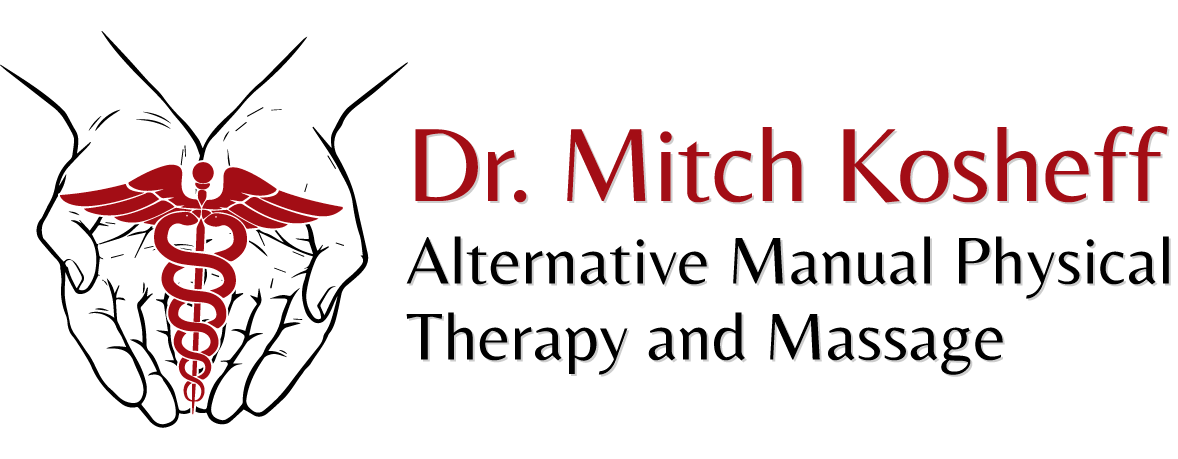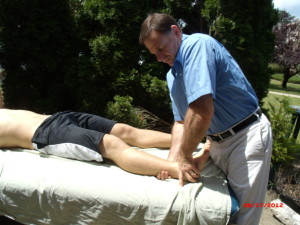I recently had the opportunity to work with a woman with unresolved foot pain. She had pain in both of her feet. Her foot pain had begun as a result of a fall. She had been referred to another facility for physical therapy and was treated for 6 weeks without help. She then wound up coming to my clinic.
While interviewing the patient, I had asked her what treatments she had received at the other physical therapy facility. She said that she was treated with ultrasound to both feet, massage, stretches, exercise, and finished with ice and electrical stimulation. While some the treatments felt good, she still continued having pain with walking. She also said that she was a runner and was unable to run because of her pain. I had also asked how many patients her therapist was seeing within the same hour? And how much one on one time she had with her therapist? She replied that the therapist she was working with would treat 2 -3 other patients at the same time. She also said that she was lucky if she had 15 minutes of the therapists attention during the hour she was in therapy. She also added that she did not always have the same therapist at each treatment session.
Evaluation Findings
When performing the initial evaluation I found her range of motion was normal. She also had normal ankle, foot, and lower leg muscle strength. So what was causing this woman’s foot pain? What was found was that the bones in the mid portion of each foot were restricted with respect to their joint play.
Joint play is the “give” that each joint has so that the joint can absorb forces. That give acts as a “spring” which absorbs shock. Even though the range of motion was normal and she had normal muscle strength, there was a stiffness at the mid portion of each of her feet. And that stiffness was preventing shock absorption causing pain.
Manual Physical Therapy Treatment
During the course of treatment, I performed very specific thrust manipulations to the bones of the mid foot, followed by various forms of oscillatory mobilization techniques for each of the bones in the midfoot and forefoot. I spent about 20 minutes on each foot. At the end of the first session, she was able to walk without pain. She continued with pain when attempting to run, however, the pain sensation was different and less intense. I then gave her very specific, gentle exercises for her to do at home to help facilitate the healing of soft tissues on the bottom of her feet, as well as to maintain and strengthen what was corrected with my hands.
At the next session I screened for densifications (restrictions) in the connective tissue (also called fascia or myofascia). I found that there were restrictions in the tissues at the middle portion of her lower leg. Restrictions in connective tissue (fascial tissue) can cause misfiring of muscle groups that specific connective tissues are associated with. After releasing those restrictions, I continued with joint mobilizations at the middle portion of both feet to make sure that patient continued to have “joint play” at the mid portion of her feet. At the end of the second session she was able to run in the clinic without pain. I continued the “hands on” manual therapy techniques for another week. By the end of the 2nd week she reported that she was maintaining a symptom free status. She was able to stand, walk, and run without pain.
Problems With The Original Physical Therapy Facility That Allowed For Treatment Failure
There were many issues at the original physical therapy facility that allowed for treatment failure. The original physical therapist only looked at range of motion and muscle strength. That therapists did not test the “joint play” that exists in nearly all joints in the body. Next, the use of modalities such as ultrasound has been shown by many research studies to be no more effective than placebo. And, modalities such as electrical stimulation may feel good, but does very little to affect stiff joints. Then, because the joints in the midfoot were restricted, the exercises given to stretch and strengthen did very little to alleviate her condition or facilitate any healing. Next, the therapist was seeing 3-4 patients within the same hour. Therefore, did not have adequate time to spend with this patient. And last, the patient did not always see the same therapist at every session. Physical therapists treating patients of other physical therapists tend to function as technicians. They blindly follow the treatment plan laid out by the original physical therapist without making any changes or progressions.
The Manual Physical Therapy Difference
When graduating from a physical therapy program physical therapists are trained as a generalist having a smattering of training in all areas of physical therapy. The profession of physical therapy is exceedingly broad based and there are many different specialties within the profession that a newly graduated physical therapists can work in. After graduating, therapists can continue as generalists or can gravitate to specialty areas of interest. Prior to becoming a physical therapist, I was a licensed massage therapist. I was entering the profession from a body works prospective. I already knew that I would be going into the specialty of orthopedic manual therapy.
My training to become a certified specialist in orthopedic manual therapy involved advanced study of joint and soft tissue mechanics beyond what is taught in a physical therapy entry level program. What is also taught is that in many cases, the impairments causing pain may, at times, be in a location different from where pain is felt. In this case, the major impairment causing pain for this patient was where the pain was felt, at her midfoot. Once the source of the pain was found and addressed, the bulk of her pain was dissipated. However, while she no longer had pain with standing and walking, she continued with pain with attempts to run; although her pain was of a different nature and less intense. As it turned out, the residual pain this patient felt was from a densification (restriction) in a strip of tissue running through her leg and wrapping around the bottom of her feet. The densification found was at the middle portion of her lower leg; an area different from where she felt her pain. Once this was found and released she was completely pain free and was able to return to running.
From my perspective, good physical therapy is time intensive, labor intensive, and requires the application of advanced manual therapy techniques. It is extremely important to take the time to trace through the body to find and address joint restrictions, biomechanical faults, and soft tissue restrictions. It is then that exercise activities can be effective in promoting healing of tissues, and then to stabilize and strengthen what was corrected with the hands. It is important to provide one on one care for the application of advanced manual therapy techniques. From taking this approach, I have been able to help patients heal faster from injury, have faster pain relief, and make gains in chronic pain conditions not achieved by other providers.
If you live in Ocean county, NJ, Monmouth county, NJ, or eastern portions of Mercer county, NJ and are having foot pain, or pain in another area of your body, read through my website at: www.drmitchpt.com. Then give me a call to discuss your condition.


